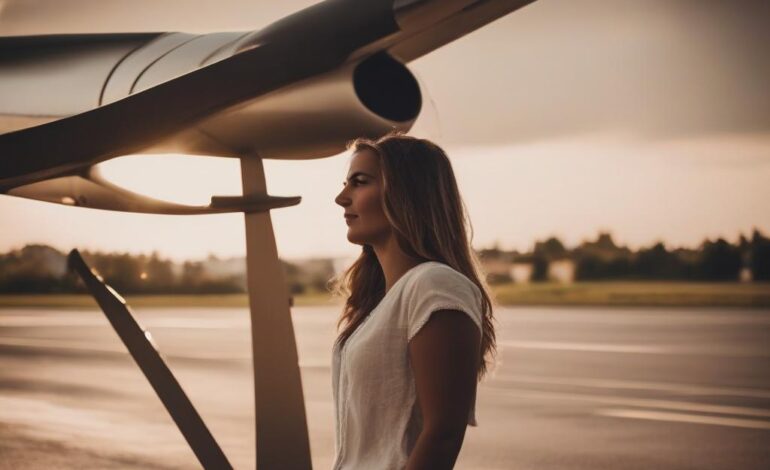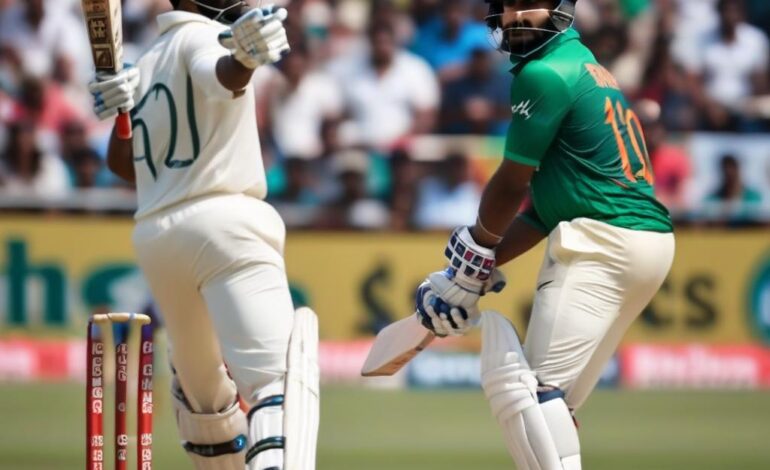How to Become a Pilot After 12th

-
Table of Contents
- How to Become a Pilot After 12th
- 1. Understand the Role of a Pilot
- 2. Choose the Right Stream in 12th Grade
- 3. Research and Choose the Right Aviation Academy
- 4. Obtain a Student Pilot License (SPL)
- 5. Complete Ground School Training
- 6. Flight Training
- 7. Obtain a Private Pilot License (PPL)
- 8. Build Flight Experience
- 9. Obtain a Commercial Pilot License (CPL)
- 10. Join an Airline or Gain Further Qualifications
- Summary
- Q&A
- 1. Can I become a pilot after completing my 12th grade in any stream?
- 2. What is the minimum age requirement to obtain a Student Pilot License (SPL)?
- 3. How long does it take to complete flight training?
Are you passionate about flying and dream of becoming a pilot? If you have just completed your 12th grade and are wondering how to pursue a career in aviation, you have come to the right place. In this article, we will guide you through the steps and requirements to become a pilot after completing your 12th grade.
1. Understand the Role of a Pilot
Before embarking on your journey to become a pilot, it is essential to have a clear understanding of the role and responsibilities of a pilot. A pilot is not just someone who operates an aircraft; they are responsible for the safety of the passengers, crew, and the aircraft itself. They must possess excellent decision-making skills, be able to handle stressful situations, and have a strong sense of responsibility.
2. Choose the Right Stream in 12th Grade
While there is no specific stream required to become a pilot, it is advisable to choose a stream that aligns with the aviation industry. Science stream with Physics, Chemistry, and Mathematics as core subjects is often preferred by aviation academies and airlines. However, some academies also accept students from other streams, provided they have studied Mathematics as a subject.
3. Research and Choose the Right Aviation Academy
Once you have completed your 12th grade, the next step is to research and choose the right aviation academy. It is crucial to select an academy that is recognized by the aviation regulatory authorities and has a good reputation in the industry. Look for academies that offer comprehensive pilot training programs, including theoretical knowledge, flight training, and simulator sessions.
Consider factors such as the academy’s infrastructure, fleet of aircraft, experienced instructors, placement record, and the cost of the training program. Speak to current and former students of the academy to get a better understanding of their experience and the quality of training provided.
4. Obtain a Student Pilot License (SPL)
Before you can start your pilot training, you need to obtain a Student Pilot License (SPL). To obtain an SPL, you must be at least 16 years old and have completed your 10th grade. The SPL allows you to fly an aircraft under the supervision of a flight instructor. The process of obtaining an SPL involves clearing a medical examination, written tests, and an interview with the aviation authorities.
5. Complete Ground School Training
Once you have obtained your SPL, you will undergo ground school training. Ground school training covers various subjects such as aviation regulations, meteorology, navigation, aircraft systems, aerodynamics, and human performance. It is essential to have a strong foundation in these subjects as they form the basis of your theoretical knowledge as a pilot.
During ground school training, you will attend lectures, participate in group discussions, and take regular assessments to gauge your understanding of the subjects. It is important to stay focused and dedicated during this phase of training as it lays the groundwork for your future as a pilot.
6. Flight Training
Flight training is the most exciting and crucial part of becoming a pilot. It involves hands-on experience in flying an aircraft under the guidance of a flight instructor. Flight training is divided into different stages, starting from basic maneuvers to advanced navigation and emergency procedures.
During flight training, you will learn how to take off, land, maneuver the aircraft, and handle various flight scenarios. You will also learn about pre-flight checks, radio communication, and navigation techniques. Flight training requires dedication, discipline, and a strong passion for flying.
7. Obtain a Private Pilot License (PPL)
After completing the required flight training hours and passing the necessary examinations, you will be eligible to obtain a Private Pilot License (PPL). The PPL allows you to fly an aircraft for personal purposes and is the first step towards a career as a pilot.
Obtaining a PPL involves clearing a flight test conducted by an authorized examiner. The flight test assesses your flying skills, decision-making abilities, and adherence to aviation regulations. Once you have obtained your PPL, you can fly an aircraft as a private pilot.
8. Build Flight Experience
After obtaining your PPL, it is essential to build flight experience to enhance your skills and increase your chances of getting hired by an airline. You can gain flight experience by flying as a hobby, participating in air shows, or joining flying clubs. Building flight experience not only improves your flying skills but also demonstrates your commitment and passion for aviation.
9. Obtain a Commercial Pilot License (CPL)
To pursue a career as a pilot in the commercial aviation sector, you need to obtain a Commercial Pilot License (CPL). The CPL allows you to fly an aircraft for commercial purposes, such as working for an airline or a charter company.
To obtain a CPL, you must meet certain requirements, including a minimum number of flight hours, clearing theoretical examinations, and passing a flight test. The CPL training focuses on advanced flight maneuvers, instrument flying, night flying, and handling multi-engine aircraft.
10. Join an Airline or Gain Further Qualifications
Once you have obtained your CPL, you have two options: you can either join an airline as a First Officer or continue your training to gain further qualifications. Joining an airline as a First Officer allows you to gain valuable experience and work towards becoming a Captain in the future.
If you choose to gain further qualifications, you can pursue additional training to become a Flight Instructor, Flight Examiner, or even a Type Rating Instructor. These qualifications not only enhance your skills but also open up opportunities for career progression and higher positions within the aviation industry.
Summary
Becoming a pilot after completing your 12th grade requires dedication, hard work, and a passion for flying. It is essential to choose the right stream in 12th grade, research and select a reputable aviation academy, and complete the necessary training and licensing requirements. Building flight experience and continuously upgrading your qualifications will further enhance your career prospects in the aviation industry.
Q&A
1. Can I become a pilot after completing my 12th grade in any stream?
While it is advisable to choose a science stream with Physics, Chemistry, and Mathematics as core subjects, some aviation academies accept students from other streams as long as they have studied Mathematics as a subject.
2. What is the minimum age requirement to obtain a Student Pilot License (SPL)?
The minimum age requirement to obtain an SPL is 16 years.
3. How long does it take to complete flight training?
The duration of flight training can vary depending on various factors such as the type of training program, weather conditions, and individual progress. On average



